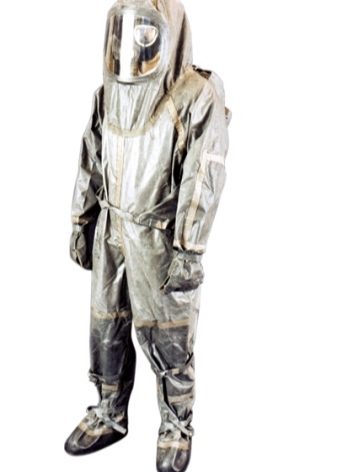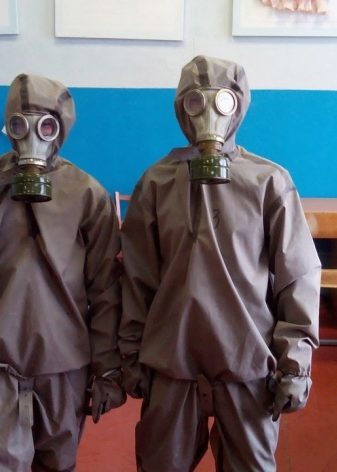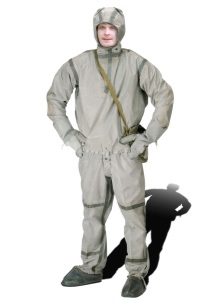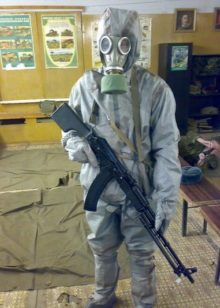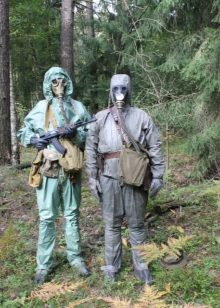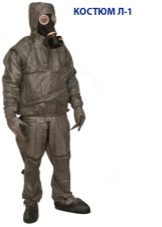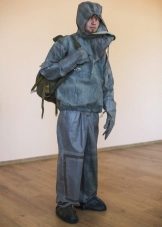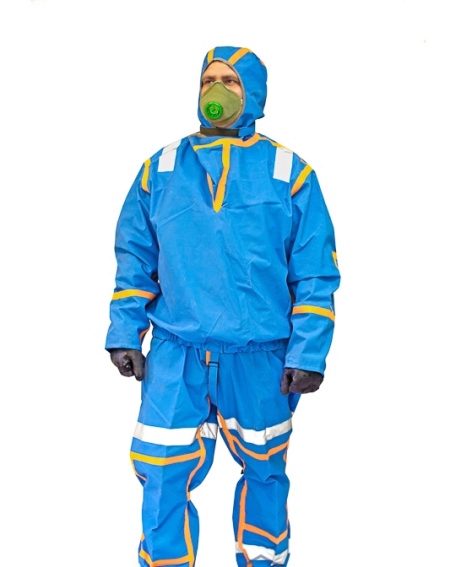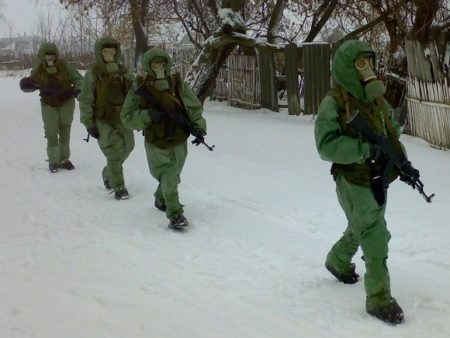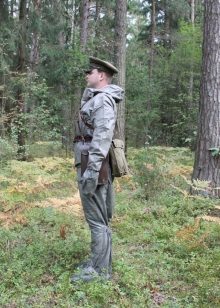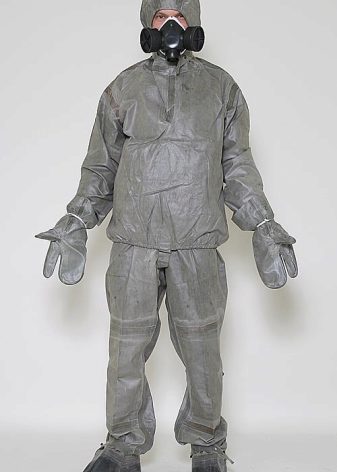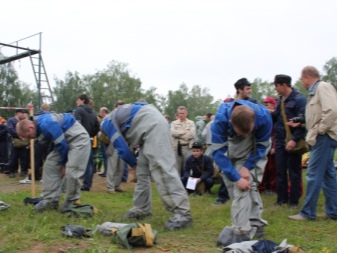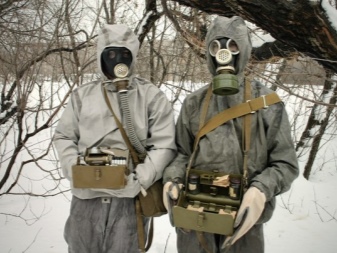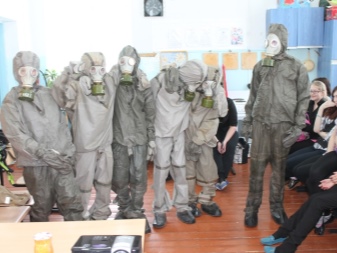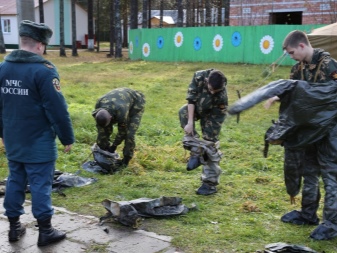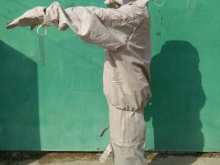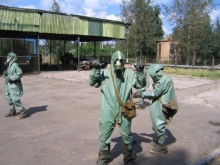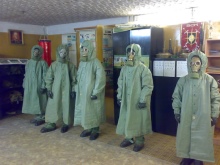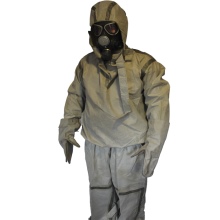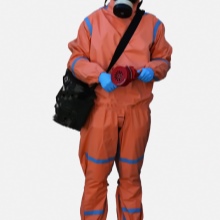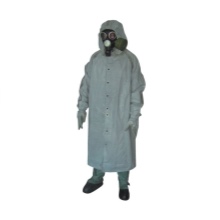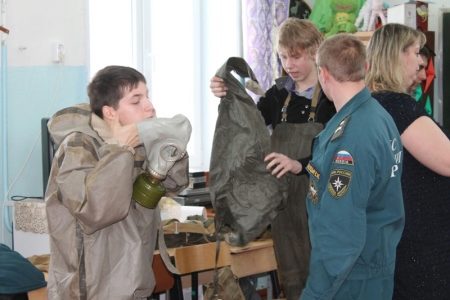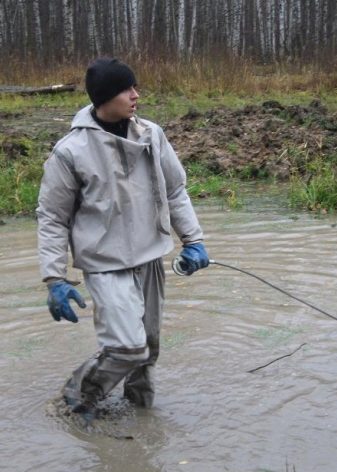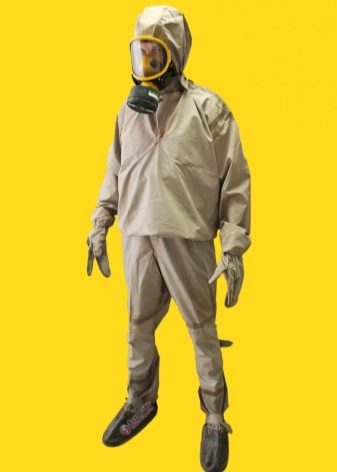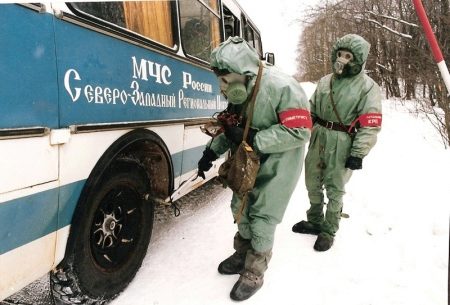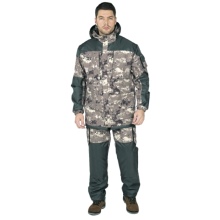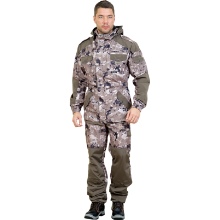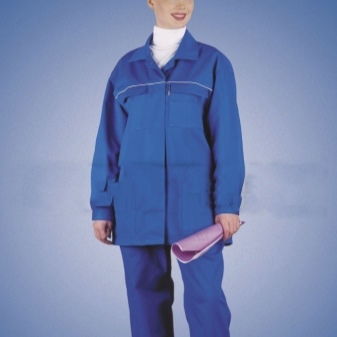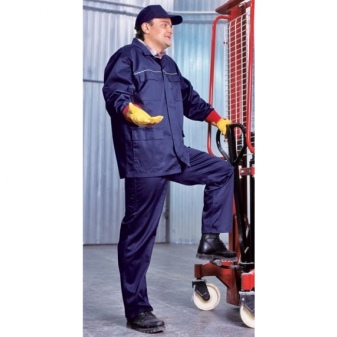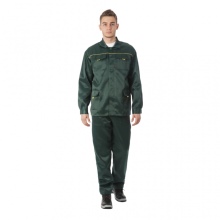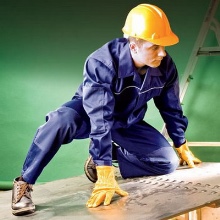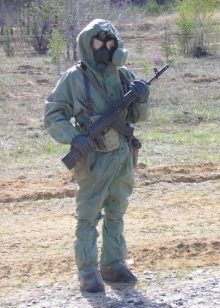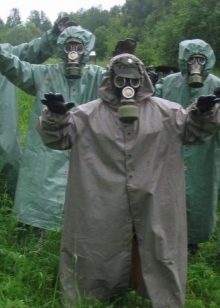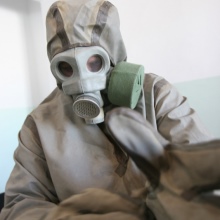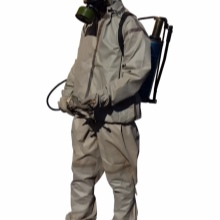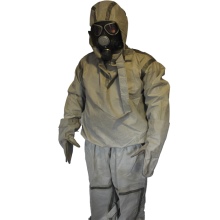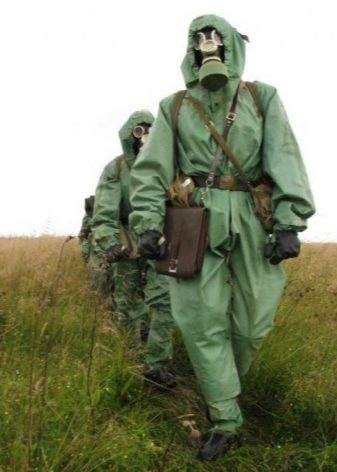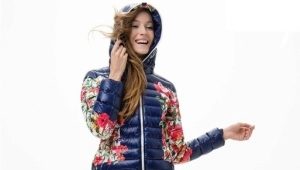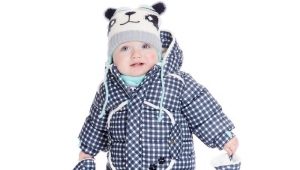Protective suit L-1
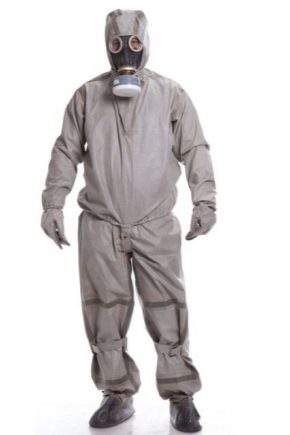
Features and benefits
A light protective suit is overalls used to protect the skin from the effects of toxic liquid, solid and gaseous chemicals and radioactive substances, biological effects. The set consists of a jumpsuit with galoshes, a jacket with a hood, two-fingered mittens and six polymer pegs for fastening. For carrying in folded form in the L-1 set there is a bag. The costume making material is rubberized fabric.
The varieties of raw materials from which such workwear is manufactured are distinguished by a high degree of tightness, have a low specific weight. The material prevents the penetration of microparticles of dangerous and harmful substances on the skin, reduces the effects of radioactive radiation.
The advantages of the protective suit L-1 include:
- Low weight - weight depending on the size and material of production is 2900 - 3500, which is why it is called "light".
- Compactness - when folded, it does not exceed 50 x 40 cm and is easily packaged in a small bag.
- Due to the tightness of the nodes, the L-1 is able to maximally protect against harmful and dangerous factors when other clothes cannot cope with this.
- For different growth and build there are several standard sizes.
- Light protective suits are widely used, they are easy to find in stores that sell workwear.
Store such uniforms should be protected from direct sunlight and places without heat. It is used directly when performing the task, after completion it is immediately removed, cleaned and disinfected, then placed in the bag.
Similar OZK equipment is a combined-arms protective kit used in the Armed Forces. It consists of a raincoat, stockings and gloves of gray and light green color. For military personnel there are 5 growth sizes of this equipment and 3 sizes for legs: 37-40, 41-442 and 43+. The fabrication material of trousers and OZK raincoat is rubberized fabric, galoshes are made of solid rubber, the sole has a thickened layer. Depending on the weather conditions, a combined-arms protective kit is put on either underwear, or in summer or winter uniforms. In severe frosts, it can be pulled over a padded jacket and warm pants with felt boots.
In the case of sharing L-1 is worn over the OZK. Bags for these two sets have about the same look.
What is light protective suit designed for?
L-1 is used in areas of chemical, biological or radioactive contamination. In case of emergency, it should be available at industrial enterprises, domestic, transport and strategic sites where there is a risk of such emissions. Light protective suit is used for such works as disinfection, degassing, decontamination. In addition, it is used in other operations in areas where protection against these damaging factors is required.
Use and care
A suit not used for work must be kept permanently folded in a dark place at a temperature not exceeding 20 ° C heat. L-1 is packaged as follows: first, sleeves and a hood are folded on the chest of the jacket, then it is bent in half along the vertical axis and rolled into a roll. Pants roll into a roll from the bottom end. Then the folded suit sets together with protective gloves are placed in the bag.
Dressed L-1 in that order. All components are taken from the bag and completely rolled out on a horizontal surface.First, put on the pants, which are fastened overalls. Then put on the jacket without pulling the hood. Its intermediate fastener fastens. Then he puts on a belt, a gas bag and a gas mask. Over it the hood, on it a helmet or a helmet stretches. Last of all, they put gloves on their hands and fasten hose loops.
Remove this outfit should be so. First removed the rubber gloves, then the bag. Then you need to get rid of the belt, unbutton the collar and trouser buckles. Then the jacket is removed, at last the pants and the gas mask. When getting rid of items of equipment, it is necessary to take it only on its inner side in order to exclude the possibility of particles of harmful substance getting on open hands.
When working in L-1 in contaminated areas, it is necessary to perform only the movements necessary for the task, not to make extras. Everything should be done quickly, as a light protective suit has a limited time for effective protection. At a temperature of more than 15 ° C, he wears on underwear, from 0 ° C to 15 ° C on a combined-arms protective kit, below 0 ° C for uniforms corresponding to weather conditions.
After using the protective suit L-1 and OZK, they must be cleaned and treated with disinfecting solutions. These include chloramine, 0.5% aqueous solution of monochloramine B, bleach. Heat treatment for disinfection can not be applied. After disinfection, the clothing should be washed with soapy water, and should only be folded to make sure that its surface is dry.
There are 3 modes of wearing the L-1: marching, “at the ready” and fighting. In the first case, the suit is worn in a bag on the shoulder. In the second case, worn on the body, but without a respirator or gas mask. In a combat position, a person must be fully equipped, including respiratory protection, the suit is closed on all fasteners.
Specifications and GOST
The costume has the following technical characteristics:
- suit weight - 3.5 kg ± 0.3 kg;
- resistance to infection and specials. processing - 10 cycles;
- production material - rubberized fabric UNKL-3 or T-15;
- number of sizes - 4;
- height 1.69 - 1.79 cm;
- temperature range: from -40 ° С to + 36 ° С;
- equipment: jacket, semi-overalls, gloves, pegs for fastening (6 pcs.), bag.
This clothing is manufactured in accordance with the standards of GOST 12.4.103-83.
The sizes are 4 types:
- I - height up to 165 cm;
- II - height 166 - 172 cm;
- III - height 173 - 178 cm;
- IV - height over 179 cm.
The shelf life of the protective product L-1 has a guaranteed figure of 10.5 years. But this value implies storing the packaged kit without active use. If it is used for its intended purpose, then a more relevant characteristic of durability is the number of cycles of use in the infected areas with subsequent disinfecting treatment. The maximum number of such cycles in statistics is 10.
Varieties
The most common types of lightweight protective suits are:
- Pass;
- Rescuer;
- Pennant;
- OZK for RCBZ.
Pass Suit in addition to the basic protective properties, as in L-1, it has additional components: an anti-mosquito net, a zipper on a two-lock zipper, chest pockets, an adjustable jacket size for thallium. Its colors are camouflage gray. Jacket and pants included.
Model Rescuer designed specifically for emergency services. The costume is made of two-layer rubberized fabric, the outer color is bright blue. The kit includes trousers, a jacket with a hood, gloves and a bag. All seams are reinforced with hermetic tape. Maintains temperature to 40 ° C, protects from chemical infection, 4 growth sizes are presented. Shelf life is 10 years.
Suit Pennant Made of cotton-polyester blend, consists of semi-overalls and a jacket. Such clothing is not as effective protection as L-1. It can be used at the industrial enterprises, and also in tourist campaigns, on fishing.
Combined Arms Protective Kit used by military personnel for activities of RCBZ (radiation, chemical and biological protection). You can purchase it in retail outlets. It has a high degree of protection against damaging factors, compactly folded. The mass of OZK is 2.9 - 3.1 kg. Unlike L-1, this suit has 5 growth sizes and 3 shoe sizes for protective stockings.
How much is
The average price for a standard set of L-1 is about 1500 rubles. The cost of the size I - 1200, II - 1400, III - 1700 rubles. Advanced model Pass on the market costs about 8,000 rubles. The price also depends on the manufacturer and material of manufacture.
Tips for choosing
First of all, before buying, you need to take into account your height in order to get a suitable category. For OZK also need to keep in mind the size of their shoes. Make sure that all the components that should be included in the kit are in place.
